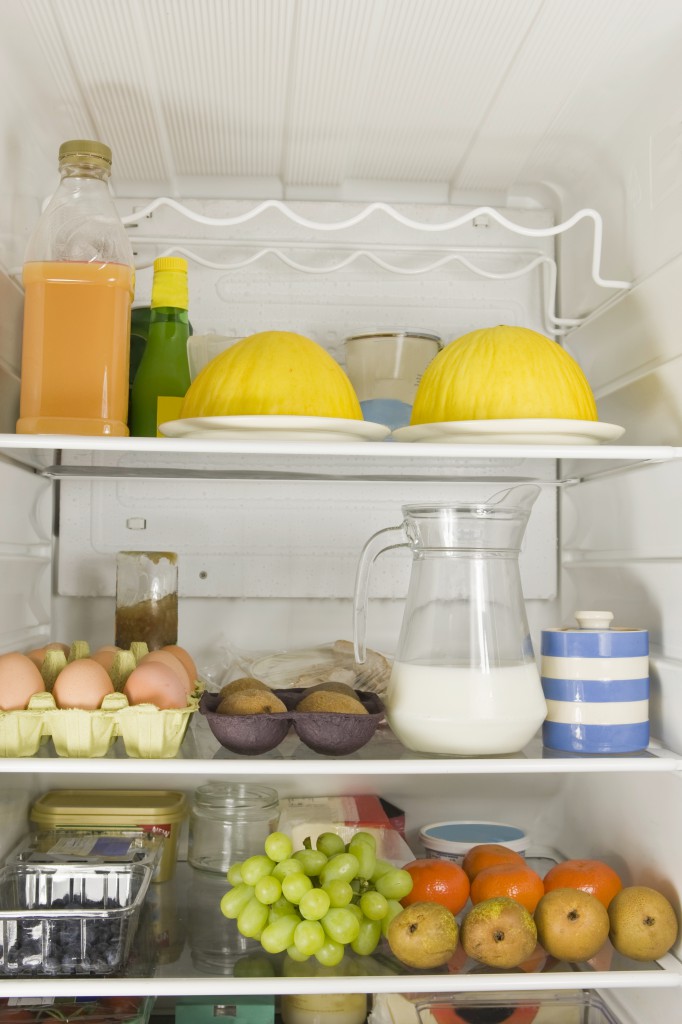What’s Growing in Your Refrigerator?

It all started with one tiny little moth. Then another.. and another. Soon my kitchen pantry and cupboards had become home to a small army of what I later learned were grain moths. They love and feed off of all sorts of dried foods… pasta, cereal, flour, rice, cake mixes, herbs, spices, dried vegetables or fruit, bird seed, dried pet food, and more. While you may not be waging war with grain moths at the moment, how many open boxes of that stuff do you have floating around your kitchen?
Don’t worry… this blog is not about alleviating grain moths per se. But my moth infestation served as an impetus for purging my pantry… and, ultimately, my refrigerator as well. In the process, I realized that I had become a bit of a food pack rat, keeping things for a rainy day in spite of the fact that their shelf life had long since expired. I work hard to keep my body, my mind and my home free from clutter and I had missed the very heart of it all… the food my family and I eat.
So, following the “eliminate, categorize, and organize” approach, I got busy purging. Things that did not make the cut were:
1.Unidentifiable leftovers.
2. Anything past its expiration date.
3. Bruised or rotting fruits and vegetables.
4. Crusty condiments.
5. Items you’ll never use.
6. Open dry goods (especially cereal, snacks, pasta, etc.) over 3 months old.
7. Items with freezer burn.
8. Spices older than 1 year.
In general, if I couldn’t remember when or why I bought something, or how I would ever use it, it went into the trash. That included gifts (jams, jellies, chocolates, etc.), wishful items I bought for my son that he won’t ever eat, fad foods, and any other puzzling purchases made on some whim. Once I did that, everything left was fresh, useful and, deserved a place on the shelf.
Next, I categorized what was left according to the following categories:
PANTRY & CUPBOARDS
1. Canned goods
2. Grains and pastas
3. Cereals (hot and cold)
4. Snacks (chips, crackers, nuts, cookies, dried fruit, etc.)
5. Drinks
REFRIGERATOR
1. Fruits
2. Vegetables
3. Condiments
4. Drinks
5. Dairy
6. Meats and cheeses
6. Leftovers
FREEZER
1. Meats
2. Frozen entrees and boxed foods
3. Ice cream and desserts
4. Breads
5. Frozen vegetables and fruit
I suggest you use these categories as a general guideline, but, ultimately, how you arrange things will have a lot to do with the physical configuration of your kitchen and the ages and heights of your family members. In other words, store things in a way that make sense to you and your family. Obviously, if you have a 4-year-old in the house, you’re going to strategize differently than if you have a 13-year old giant rummaging through your cupboards.
The real trick is, as always, is to stay on top of it. Here are a few final tips on how to keep your kitchen a fine-tuned culinary machine:
1. Take everything out as you purge and organize what’s left on the counter. Wipe down pantry shelves, cupboards, refigerator, and freezer before you put anything back.
2. Purchase a Sharpie pen, labeler or food storage labels (www.containerstore.com), gallon-size freezer bags, freezer-safe plastic containers, ever-fresh green produce bags (www.reusablebags.com), and glass storage containers.
3. Label everything with the contents and date.
4. Take dry goods out of the original packaging and store in glass air-tight containers. If you need the directions on the box, cut them out and put them in or tape them to the container.
5. Keep a list of items that you’ve tossed but that need to be replaced.
6. Donate useable dry/canned items to the local food bank.
7. Purge at least every three months.
8. Step back, admire your handiwork, and give yourself a big pat on the back!